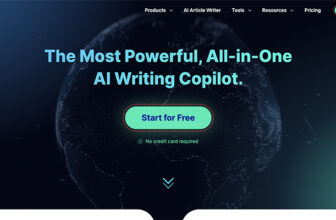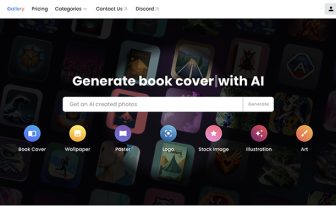
OpenAI has developed ChatGPT, an AI-powered conversational system designed to engage users in conversation, learn from them, and provide challenging interactions. Users can access ChatGPT by logging in with their OpenAI account credentials. Additionally, there is a ChatGPT extension available on the Chrome Web Store, allowing users to seamlessly integrate the system’s advanced language processing capabilities into their online research and communication. Notably, the usage of ChatGPT is currently free of charge during the research preview period. In this article, we will delve into the process of ChatGPT Login with Google and explore the significant advantages of leveraging ChatGPT for your daily requirements.
About ChatGPT
ChatGPT is an AI-powered language model developed by OpenAI. It engages in natural language conversations, providing human-like responses. While it has undergone improvements, it may occasionally produce incorrect answers. User feedback is encouraged to enhance the system.
How to Log in with Google
To log into ChatGPT with your Google account, please follow these steps:
- Navigate to the login page of ChatGPT.
- Locate and click on the “Sign in with Google” button.
- When prompted, provide your Google account credentials, including your email address and password.
- Take a moment to review the permissions that ChatGPT requests to access your Google account.
- Accept the permissions to grant ChatGPT access.
- Allow the system some time to authenticate your credentials and redirect you back to ChatGPT.
- Once you have been redirected, you should find yourself successfully logged into ChatGPT using your Google account. You are now ready to make use of the service.
Benefits of Using ChatGPT with Google
There are several benefits to using ChatGPT with Google:
- Seamless Integration: By logging into ChatGPT with your Google account, you can enjoy seamless integration with other Google services and products. This allows for convenient access and sharing of information across platforms.
- Enhanced Security: Google has robust security measures in place to protect user accounts. By utilizing your Google account for ChatGPT, you can benefit from these security features, such as two-factor authentication and account recovery options.
- Personalization: Google services often provide personalized experiences based on user preferences and behavior. By leveraging your Google account with ChatGPT, you may have access to personalized recommendations and tailored suggestions that enhance your user experience.
- Data Synchronization: If you use multiple devices or platforms, logging in with your Google account ensures that your ChatGPT data and settings are synchronized across those devices. This allows you to seamlessly switch between devices without losing your progress or preferences.
- Accessibility: Google’s infrastructure and network capabilities help ensure that ChatGPT is readily available and accessible from various locations. This means you can use ChatGPT with Google from different devices and enjoy reliable performance.
- Ecosystem Integration: Google offers a wide range of services, such as Google Drive, Google Calendar, and Google Docs. Integrating ChatGPT with Google allows for easy collaboration and interaction with these services, streamlining your workflow.
Overall, using ChatGPT with Google provides a more integrated, secure, and personalized experience, with the added convenience of data synchronization and seamless connectivity across devices and Google services.
ChatGPT Use Cases
ChatGPT has a wide range of use cases across various domains. Some notable examples include:
- Customer Support: ChatGPT can be used to provide automated customer support, answering frequently asked questions, troubleshooting common issues, and offering assistance in real-time. This helps businesses enhance their customer service and reduce response times.
- Virtual Assistants: ChatGPT can serve as a virtual assistant, helping users with tasks such as scheduling appointments, setting reminders, sending emails, providing weather updates, and answering general inquiries. It can mimic human-like conversation and perform tasks based on user commands.
- Content Generation: ChatGPT can assist content creators by generating ideas, suggesting topics, and providing creative inputs. It can also help with drafting articles, blog posts, social media captions, and other written content, saving time and boosting productivity.
- Language Translation: With its language understanding capabilities, ChatGPT can aid in language translation tasks. Users can input text or engage in a conversation in one language, and ChatGPT can provide accurate translations in real-time.
- Education and Learning: ChatGPT can be utilized in the education sector to provide personalized tutoring, answer student queries, and facilitate interactive learning experiences. It can adapt to different learning styles and cater to individual student needs.
- Information Retrieval: ChatGPT can act as an information retrieval system, helping users find relevant information from large datasets or knowledge bases. It can summarize articles, extract key details, and provide concise answers to specific questions.
- Creative Writing and Storytelling: ChatGPT’s language generation capabilities make it a valuable tool for creative writing and storytelling. It can assist writers with plot development, character creation, and generating engaging narratives.
- Personal Assistant: ChatGPT can serve as a personal assistant, organizing schedules, setting reminders, providing recommendations, and assisting with various day-to-day tasks. It can offer personalized suggestions based on user preferences and past interactions.
These are just a few examples of how ChatGPT can be applied in practical scenarios. Its versatility and ability to understand and generate human-like text make it a valuable tool in many industries and domains.
Limitations of ChatGPT
While ChatGPT is a powerful language model with numerous applications, it does have some limitations:
- Lack of Contextual Understanding: ChatGPT may sometimes struggle to maintain a coherent context during extended conversations. It may provide responses that are contextually incorrect or fail to understand nuanced prompts.
- Overconfidence and Incorrect Information: ChatGPT tends to generate responses with confidence, even when the information provided is incorrect or unreliable. Users should exercise caution and verify the accuracy of the information provided by ChatGPT.
- Sensitivity to Input Phrasing: The way a question or prompt is phrased can significantly affect ChatGPT’s response. Minor changes in wording can lead to different answers, making it important to phrase queries carefully.
- Inability to Ask Clarifying Questions: Unlike a human interlocutor, ChatGPT cannot ask clarifying questions to better understand ambiguous or vague queries. It relies solely on the input provided and may provide incorrect or irrelevant responses if the input is unclear.
- Bias and Offensive Content: ChatGPT can sometimes exhibit biased behavior or generate offensive and inappropriate responses. Efforts have been made to mitigate these issues, but biases may still arise due to the data it was trained on.
- Lack of Real-Time Updates: ChatGPT’s knowledge is based on the data it was trained on, which has a cutoff date. It may not be aware of recent events or have up-to-date information on certain topics.
- Ethical Use and Misuse: ChatGPT can be misused to generate misleading information, spam, or inappropriate content. Responsible and ethical use is crucial to ensure that the technology is used in a constructive and beneficial manner.
It’s important to understand these limitations and use ChatGPT as a tool that complements human judgment and knowledge, rather than relying solely on its responses.







good
assignment work
trading